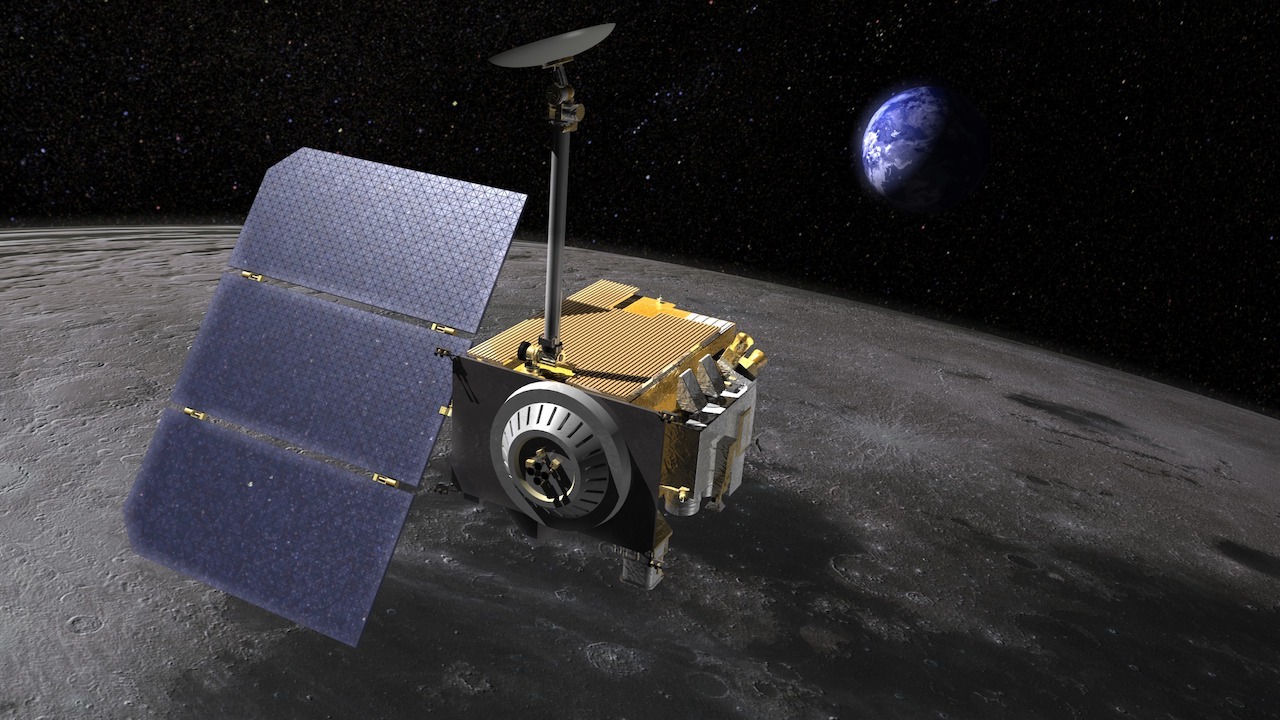


The platform will be three-axis stabilized and power of about 1850 W (end-of-life), giving 800 W average over each orbit, will be provided by a 10.7 square meter solar array and stored in an 80 A-hr Li-ion battery. The satellite is expected to have a launch mass of about 1846 kg, and a dry mass of less than 949 kg. This may be followed by an extended mission of up to 5 years in a higher altitude (30 x 216 km) low-maintenance orbit. The mission is expected to last for one year in a 30 - 70 km altitude lunar polar orbit. It will enter an initial 5 hour orbit with a periselene altitude of roughly 100 km which will then be lowered into a 50 km circular orbit. LRO will be put into a direct insertion trajectory and will reach the Moon on 23 June at 09:43 UT (5:43 a.m. LRO launched along with its companion spacecraft, the Lunar Crater Observation and Sensing Satellite (LCROSS), from Kennedy Space Center on 18 June 2009 on an Atlas 5 401 launch vehicle at 21:32 UT (5:32 p.m. A primary goal of the mission is to find landing sites suitable for in situ resource utilization (ISRU). The following measurements are listed as having the highest priority: characterization of deep space radiation environment in lunar orbit geodetic global topography high spatial resolution hydrogen mapping temperature mapping in polar shadowed regions imaging of surface in permanently shadowed regions identification of putative deposits of appreciable near-surface water ice in polar cold traps assessment of meter and smaller scale features for landing sites and characterization of polar region lighting environment. The first mission of NASA's Robotic Lunar Exploration Program, it is designed to map the surface of the Moon and characterize future landing sites in terms of terrain roughness, usable resources, and radiation environment with the ultimate goal of facilitating the return of humans to the Moon. The Lunar Reconnaissance Orbiter (LRO) is a Moon orbiting mission launched in June 2009. Launch Site:Cape Canaveral, United States (2018) Precise orbits of the Lunar Reconnaissance Orbiter from radiometric tracking data, Journal of Geodesy, 92(9), pp 989–1001, doi.org/10.1007/s0019-4.Launch Date/Time: 21:32 UT (5:32 p.m. (2018) Assessment of the impact of one-way laser ranging on orbit determination of the Lunar Reconnaissance Orbiter, Journal of Geodesy, doi.org/10.1007/s0019-9.
#Lunar reconnaissance orbiter software#
The orbits are provided here as SPK kernels for use with the Spice software system ( ).They are available in different flavours characterized by the arc length and the observation types used in the determination of the orbit. An independent set of such orbits was produced within the research unit FOR 1503 "Space-Time Reference Systems for Monitoring Global Change and for Precise Navigation in Space" funded by the German Research Foundation (DFG). Referring these observations to a Moon-fixed reference frame requires highly accurate and consistent orbits. Since 2009, the Lunar Reconnaissance Orbiter (LRO) explores the lunar surface by images and altimetric ranges. Orbits of the Lunar Reconnaissance Orbiter


 0 kommentar(er)
0 kommentar(er)
